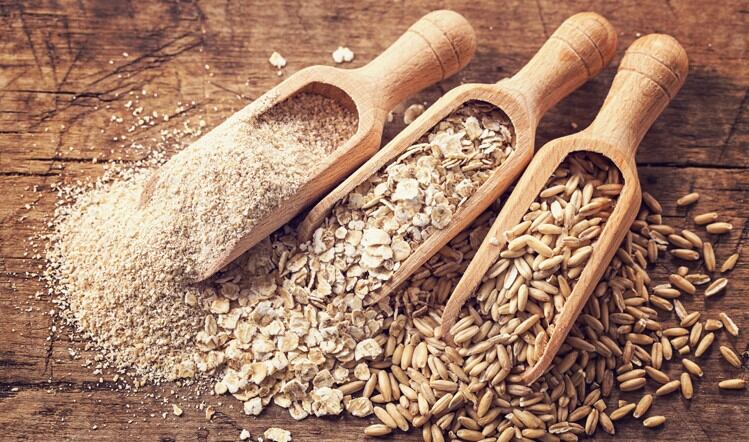For all the talk about the war against childhood obesity, it appears the problem is only getting worse.
Figures published by Public Health England (PHE) this summer show severe obesity levels in 10- and 11-year-olds have reached their highest rate since records began.
To put it bluntly, in addition to a lack of exercise, the nation’s kids are still eating too much of what is bad for them and not enough of what is good.
Children in all age groups exceed government guidance for sugar intake, while only 4% of 11- to 18-year-olds have the recommended level of fibre in their diet and just 8% consume five portions of fruit and vegetables a day.
Government strategies to tackle poor childhood nutrition have tended to focus on taking stuff out of food – in particular, sugar, salt and fat – and brand owners have certainly responded. However, the more progressive manufacturers are also looking at what nutritional benefits they can put back into their products.
It’s a move that is merited, given the weight of research indicating a wholly inadequate nutrient intake among children.
“There is a high prevalence of vitamin D and docosahexaenoic acid deficiency in toddlers and young children across many European countries, including the UK,” says Ira Walterscheid-Müller, early life nutrition segment lead for Europe, the Middle East and Africa at DSM. “Other notable deficiencies include vitamin E, omega-3, iodine and iron.”
Engaged in children’s health
More positively, parents across the world are becoming increasingly c and wellbeing and are much more aware of the benefits good nutrition can offer, says Walterscheid-Müller.
“As such, consumers are demanding more customised, high-quality and differentiated products that will help combat micronutrient deficiencies and promote healthy growth and development.”
Fibre is one nutrient where the case for fortification is compelling. A recently published study from the University of Pécs in Hungary has shown health benefits in kindergarten children aged three to six years as a result of consuming chicory root fibres.
Regular intake of a dedicated composition of chicory root fibre, a variant of Beneo’s Orafti inulin, was found to support the children’s gut microbiota by increasing bifidobacterial and lactobacilli numbers, resulting in lower numbers of fever episodes and sinusitis.
Tate & Lyle is one of several manufacturers looking to boost fibre intakes through the development of fortified ingredients. The company recently hosted customers from across Europe at a nutrition science seminar where attendees had the opportunity to sample prototypes enriched with Tate & Lyle fibres, such as a blueberry smoothie with PromOat Beta Glucan.
“We need to talk about fibre,” suggests Dr Kavita Karnik, director of global nutrition at Tate & Lyle. “As well as supporting digestive regularity, fibres offer a host of health benefits, helping to reduce cholesterol, improve blood glucose response, and enhance calcium absorption. High-fibre diets are also associated with a reduced risk of colorectal cancer and type 2 diabetes.”
More fibre through fruit
Fortification comes in many guises. Some manufacturers use fruit to boost fibre in children’s diets while at the same time enhancing the natural sweetness of lower-sugar products.
A Welsh consortium comprising sustainable food technology specialist Pennotec, Bangor University’s BioComposites Centre, Coleg Menai’s Food Technology Centre and Cork company CyberColloids, has recently secured £350,000 of funding from the Welsh Government’s Food and Drink Division and Innovate UK’s Small Business Research Initiative to develop a method of utilising apple pomace, a by-product of apple juice and cider production, as an ingredient in a range of convenience foods.
“Apple pomace is a wonderful natural ingredient and can be used to replace certain high-calorie ingredients, such as fat, while enhancing the fibre content in popular school menu food items, like cakes, savoury dishes, gravy and sauces,” says Dr Jonathan Hughes, managing director of Pennotec.
Frutarom-owned Taura, meanwhile, has used its novel Ultra-Rapid Concentration (URC) technology, which concentrates the natural sweetness of fruit, to develop JusFruit pieces, used to increase the overall perception of sweetness.
“The products of this technology allow for the easy and tasty intake of daily fruit rations, anywhere a person goes,” says Itay Shafat, product manager for cognitive line and sports nutrition at Frutarom Health. “This, and other technologies, have the potential to revolutionise how children are consuming nutrients.”
Shafat also believes there is increasing interest in cognitive ingredients, such as Frutarom’s Sharp-PS phosphatidylserine, which he says is especially suitable for dairy products such as yogurts and for other children-friendly delivery systems.
Children’s cognitive health was the focus of recent research by Swansea University, which found that a breakfast prepared with Beneo’s functional carbohydrate Palatinose, rather than glucose, improved children’s mood and cognitive performance. On two occasions, at least one week apart, the children consumed a breakfast including cornflakes, milk, yoghurt, jam and orange juice.
The results showed that although both groups of children initially did well after breakfast, those eating the Palatinose breakfast maintained significantly better memory performance and mood later in the morning than those consuming the glucose-breakfast, both in immediate and delayed memory tests.
Physical development
Along with cognitive wellbeing, children’s physical development is also a focus for fortification. Nutritional Growth Solutions has launched Healthy Height to the European market – a child-friendly protein shake mix, available in vanilla and chocolate flavours, which the company says is clinically shown to improve children’s height.
Containing 12 grams of bone and muscle-building whey protein in each serving, the shake mix is fortified with vitamins and minerals, and is a good source of amino acids that are essential for growth.
Fortification, delivered through a milk drink for instance, can be a convenient way to help children consume the nutrients they might otherwise lack in their diets. But it is not without its challenges.
To be effective, fortified products need to tick certain boxes – they must be easy to intake, and the active ingredients must be the best quality and backed by a sufficient body of research, suggests Shai Karlinski, vice president of sales and marketing at Anlit.
“Only the correct combination of these will ensure a successful product that the end-user would love to consume,” he says.
Another challenge is in reaching potential users that are not yet consuming existing products. “We, as manufacturers, need to find the way to their heart and taste, either by [using] cleaner ingredients or through innovative and better formats that will make the use of fortified foods more appealing,” Karlinski adds.
Future fortification is likely to lie in greater personalisation. For DSM, this means innovation in new tools and technologies such as diagnostics, big data and new delivery formats, according to Walterscheid-Müller.
“For example, we could work with pregnant women, via personalised tests, to determine how to develop the best supplementation for that individual and her baby,” she says.
“By better understanding the specific challenges mothers face, brands and manufacturers can have a positive impact on the lives of young children by offering delicious and nutritious products tailored to their specific needs.”




